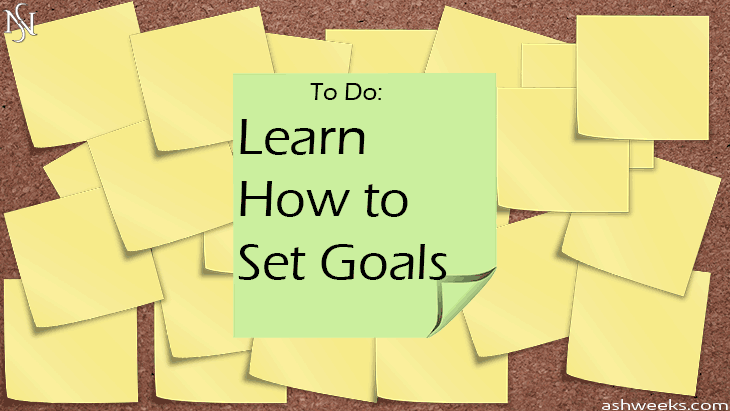You have just worked out your ideal lifestyle, but you want to be able to work out what actions you can take today to get there from your current lifestyle. To do that, you first need to work out what areas of your life would change, and this is done by comparing every area of your current lifestyle to every area of your ideal lifestyle.
Additionally, I have found that it is useful to break up the lifestyle progression into stages. They are ‘Your Current Lifestyle’, ‘Your Ideal Lifestyle’, and at least one intermediate lifestyle. Only having your ideal lifestyle to set your sights on is likely to make the goal seem out of reach and reduce your motivation. Setting it in stages also allows you to take note of the progress you are making as you advance from one stage to the next.
Your Current Lifestyle
How do you currently live? The criteria from yesterday’s post might be useful in assessing it:
- Residence
- Do you live with your parents, with a partner, with friends, or by yourself?
- What country, state, and suburb do you live in?
- What type of home? For example, house, unit, apartment, or dorm
- What is the home like? For example, old or new, modern or outdated, luxurious or lacking, natural light or dark
- What amenities does it have? For example, study, lounge, three bedrooms
- What is the climate like?
- How dense are the buildings in this area? Are homes on big blocks? Or are there lots of tall apartment buildings?
- What localities are you near? For example, a public pool, train station, bus stop, library, park, or shopping centre
- Transport
- Do you have a car? If so, what is it like?
- Do you have any other modes of transport, such as a motorbike?
- Do you have any pets? If so, how many and of what kind?
- What regular activities do you currently take part in? This includes school, sports, hobbies, surfing, etc
- Social
- Do you spend much time with family?
- What about a significant other? Are you in a relationship?
- How often do you see your friends? How many do you see?
- Do you go out and meet new people?
- What is your diet like?
- How often do you exercise? Do you go to gym or play any sports?
- How often do you go on holidays?
- How is your health affected by your current lifestyle?
- Working conditions
- Smoking, drinking, etc
- Risky activities
- Unhealthy diet or exercise routine
- How is your income generated?
- Do you work as an employee?
- What hours?
- How are the people you work with? What about your manager?
- What is the work like?
- Are you self-employed?
- Do you own a business (and it will run without you being there for more than two days a week)?
- Do you have investments that generate an income, such as shares or property?
- Do you have significant savings that earn you interest?
- Do you work as an employee?
- How much free time do you have in a typical week?
- Do you have time to relax?
- Are you able to set aside some time to simply read or learn about a new topic?
- How much flexibility do you have in your week?
Intermediate Lifestyle Stages
If you’re like most people, there’s likely to be a large financial gap between what is required to fund your current lifestyle versus your ideal lifestyle. In reality, you probably wouldn’t stay in your current lifestyle until you amass enough wealth or income to go straight to the top — you would upgrade certain aspects along the way. Additionally, circumstances change. You might currently be living with your parents and once moved out, you would no longer be in your original lifestyle, yet you wouldn’t be in your ideal lifestyle.
Personally, I have one intermediate stage plus modifications on the first two stages depending on changes in circumstance. For example, if my partner and I start a family, we will necessarily require a larger house. How long will you be in your current lifestyle for? If you have yet to move out of your parent’s house, that is one more stage for you to plan for.
I recommend you design at least two lifestyle stages in between your Current and Ideal. They are a Minimum Lifestyle and a 75% Lifestyle.
Minimum Lifestyle
This is the minimum lifestyle you are happy with and, depending on where you are in life currently, this may be an upcoming stage or you may have already passed it.
The answers to the criteria for this stage will include the bare minimum. Where, if you were living this lifestyle, you wouldn’t be lacking in any essentials:
- you wouldn’t be stressed at work1;
- you wouldn’t be in debt;
- you would have time with family and friends;
- you would be in good health and have access to health services;
- your home would be adequate for your needs;
- you can get yourself from A to B, whether that means you have adequate access to public transport or you have a car that gets you from A to B without breaking down or being a safety hazard;
- you go on the occasional holiday; and
- you have enough down-time to relax or pursue hobbies and interests.
This lifestyle stage is very useful in many cases and essential for others. This is because: (1) it allows you to work out the minimum amount of money required to fund a lifestyle in which you are happy; and (2) it puts life into perspective in a very materialistic world.
For example, say you want to start your own business or you want to work out how much income you would need to retire (or no longer need to work). To stay afloat, you need to bring in at least the amount of money for your Minimum Lifestyle. Technically, if your passive income (income you don’t need to trade your time for, e.g. investment earnings or business income) is equal to or greater than the cost of your Minimum Lifestyle, then you are no longer required to work. Additionally, you can use this figure, say a monthly expense, to work out how long your savings will last before you business needs to be bringing in money.
Also, if you ever feel that you are lacking in a materialistic way, such as not having a new car or a regular flow of new clothes/shoes, or a fancy watch, then remember your Minimum Lifestyle —how you don’t need anything more than it to be happy, enjoy life, and do the things that bring you fulfilment.
75% Lifestyle
While planning your ideal lifestyle, you may have done what I did and created an extravagant lifestyle that was perfect in every way except that it would be extremely expensive to sustain. The 75% Lifestyle is a compromise between ‘Ideal’ and ‘Minimum’. Where ‘Minimum’ was more about keeping expenses low and ‘Ideal’ paid zero attention to cost, the 75% Lifestyle factors in both. How can you design an amazing lifestyle that doesn’t seem too far-fetched?
Let’s compare possible examples of Ideal criteria versus 75% Lifestyle criteria:
- Extravagant mansion with all the latest tech vs a recently built apartment by the beach
- Latest Ferrari vs a three-year old Lexus
- Massive clothes/shoes/image budget vs good clothes/shoes/image budget
- Four amazing holidays a year vs two great holidays a year
- Working zero to one day a week vs working one to three days a week
This lifestyle, although not quite as fantastic as your Ideal Lifestyle, is much more attainable. By achieving this lifestyle you would have made significant progress and is a milestone of sorts. You can go on to work towards your Ideal Lifestyle, if you choose to.
Funding the Lifestyles
Next week we will look at how to estimate the cost of each lifestyle stage so that you can set financial goals for yourself. These goals will be the targets and milestones for your income generation and will be the basis on which your sub-goals are created. See this week’s post on breaking down goals into actions for more on this topic.
Note: if you used the cost of this lifestyle to plan your required retirement income, work wouldn’t be a factor↩





